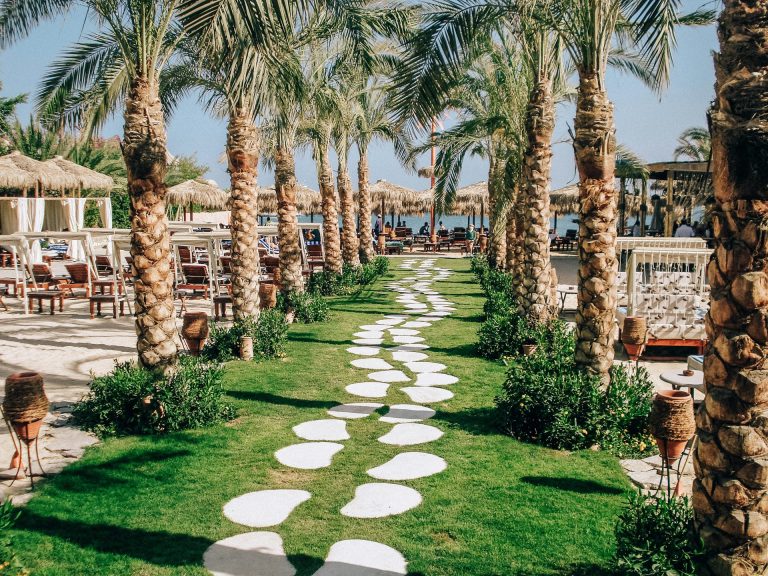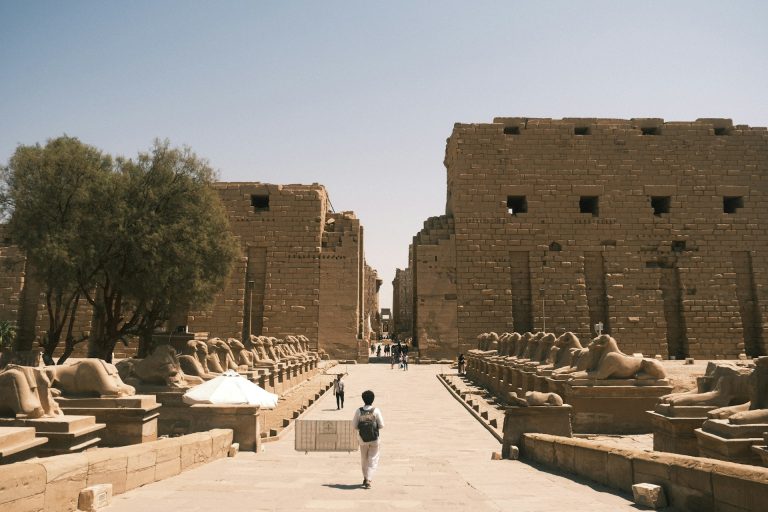Uncover Hidden Gems in Luxor
Luxor, often called the world’s greatest open-air museum, is a treasure trove of history and culture. Known for its grand temples and archaeological marvels, this ancient city offers much more than the well-trodden paths of the Valley of the Kings and Karnak Temple. For those who seek to uncover the lesser-known yet stunning attractions, Luxor is brimming with hidden gems waiting to be explored.
One of the most enchanting aspects of Luxor is its remarkable blend of past and present. It’s a place where bustling markets thrive in the shadows of millennia-old monuments. Everywhere you look, there’s a story whispering through the air, inviting you to delve deeper. Whether you are fascinated by the opulence of ancient tombs or drawn to the vibrant life of local markets, Luxor captures every traveller’s heart.
This guide will take you on a journey to some of Luxor’s must-see hidden gems. From exploring the intricate tombs in the Valley of the Nobles to experiencing the daily hustle and bustle at local markets, and discovering lesser-known temples and museums, you’ll gain a unique perspective on this timeless city. Join us as we map out the best spots in Luxor that promise to leave you in awe.
Discovering the Valley of the Nobles
The Valley of the Nobles is one of Luxor’s hidden gems that offers a more intimate look at ancient Egyptian life. This site, less crowded than the famous Valley of the Kings, contains the tombs of nobles and high officials. These tombs are some of the best-preserved in Egypt, adorned with vibrant murals and detailed carvings that depict scenes from daily life, religious rituals, and afterlife beliefs.
One of the highlights is the Tomb of Ramose, a high official during the reign of Amenhotep III and Akhenaten. The tomb features a mix of traditional and Amarna art styles, offering an intriguing glimpse into a period of artistic transition in ancient Egypt. The scenes of mourning women and daily activities are exceptionally well-preserved, displaying incredible craftsmanship.
Another notable tomb is that of Sennefer, known as the “Tomb of the Vines” due to its ceiling decorated with grapevines. Sennefer was the Mayor of Thebes, and his tomb is richly decorated with scenes of agriculture and banquet scenes, reflecting his status and wealth. Wandering through these tombs, you can almost feel the presence of the nobles who once ruled over this ancient land.
Visiting the Valley of the Nobles provides a fascinating perspective on ancient Egyptian society beyond the royal families. It’s a peaceful place where you can take your time to appreciate the intricate details and artistry that have survived thousands of years.
Exploring Luxor’s West Bank Temples
Luxor’s West Bank is home to several stunning temples that are often overshadowed by the more famous sites. However, these temples offer equally mesmerising experiences and are crucial to understanding Egypt’s rich history.
The Temple of Medinet Habu, built by Ramses III, is one of the most impressive on the West Bank. The temple complex is massive and features some of the best-preserved temples in Egypt. The walls of Medinet Habu are covered with detailed reliefs depicting Ramses III’s victories over the Sea Peoples and other enemies. The colours are still quite vivid in some parts, giving you a sense of the temple’s original grandeur.
Another remarkable site is the Ramesseum, the mortuary temple of Ramses II. Though not as well-preserved as Medinet Habu, the Ramesseum is famous for its colossal statue of Ramses II, which inspired Shelley’s poem “Ozymandias.” The fallen statue, coupled with the surrounding ruins, evokes a sense of timeless grandeur that is both humbling and awe-inspiring.
Lastly, don’t miss the Temple of Seti I, a smaller but intricately decorated temple dedicated to multiple gods, including Amun, Osiris, and Isis. The reliefs here are known for their fine craftsmanship and give insights into the religious practices of the time.
Exploring these temples on the West Bank allows you to step back in time and witness the incredible architectural achievements of ancient Egypt. Each temple tells its own story, adding depth and context to your overall experience in Luxor.
Experiencing Daily Life at Luxor’s Markets
One of the best ways to soak in the local culture of Luxor is by visiting its bustling markets. These vibrant spots give you a taste of daily life in Egypt and are perfect for shopping and people-watching.
The Luxor Souq is a must-see. It’s a traditional bazaar where you can find everything from spices and textiles to handcrafted jewellery and souvenirs. The vendors are friendly and eager to show you their goods. Walking through this market, you can smell the exotic spices, hear the haggling of traders, and see the colourful displays of fabrics and jewellery.
Another fascinating market is the El-Karnak Street Market. It’s less touristy than the Luxor Souq and offers a more authentic shopping experience. Here, locals buy their daily provisions, like fresh fruits, vegetables, and meat. Strolling through the market, you’ll see vendors arranging their produce in beautiful, eye-catching patterns. This market offers an excellent opportunity to interact with locals and learn more about their everyday life.
Don’t forget to visit the weekly animal market if you get the chance. This market is held on the periphery of Luxor and features locals trading livestock such as sheep, goats, and cows. It’s a chaotic but fascinating experience, giving you a glimpse into the rural way of life.
Hidden Treasures in Luxor’s Museums
Luxor is home to several museums that house hidden treasures showcasing the city’s rich history. These museums provide a deeper understanding of the ancient civilisation that thrived here.
The Luxor Museum is a gem often overlooked by visitors. It houses a smaller but meticulously curated collection of artefacts from the New Kingdom and later periods. Highlights include the well-preserved statues of pharaohs and gods, as well as objects from Tutankhamun’s tomb. Unlike larger museums, the exhibits here are thoughtfully spaced, allowing you to appreciate each piece up close.
Another must-see is the Mummification Museum. This unique museum offers insights into the ancient Egyptian art of mummification. It features mummified animals, human remains, and the tools used in the mummification process. Informative displays explain the religious significance and the detailed steps involved in preserving bodies for the afterlife.
Lastly, the Carter House Museum provides a fascinating look into the life and work of Howard Carter, the archaeologist who discovered Tutankhamun’s tomb. The museum is housed in Carter’s former residence and includes personal items, photographs, and notes related to his ground-breaking discovery. This museum adds a personal touch to the grand story of Egyptology.
Conclusion
Luxor is full of hidden gems that reveal the city’s rich and vibrant history. From the ornate tombs in the Valley of the Nobles to the magnificence of the West Bank temples, every corner of Luxor has a story to tell. Whether you’re exploring traditional markets brimming with life or delving into museums that preserve ancient secrets, you’ll find endless opportunities to discover more about this fascinating city.
Each site adds a layer to Luxor’s tapestry, making your visit an adventure through time. The intricate artwork, the bustling markets, and the immersive museum exhibits offer a complete and unique experience. You’ll come away with a deep appreciation for both the grandeur and the everyday life of ancient and modern Luxor.
Ready to uncover Luxor’s hidden gems? Book your Luxor Egypt tours with TaNefer Tours today and let us guide you through the wonders of this ancient city.








